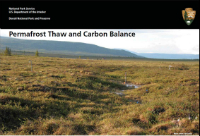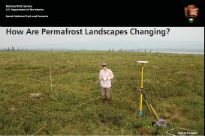Members of the Ecosystem Dynamics Lab participate in various outreach activities. Please find more information below.
|
The objectives of this network are to link biological C cycle research with well-developed networks in the physical sciences focused on the thermal state of permafrost. Please visit the Permafrost Carbon Network webpage for more information |
|||
Press Articles
Talking to the press is an important outreach activity that members of our group are actively involved with. Here are a examples from the last five years:
The irreversible emissions of a permafrost 'tipping point' (CarbonBrief)
Permafrost: The hidden climate risk in the Arctic (The Revelator)
NASA armada targets thaw in Arctic soil (Science Magazine)
We all knew this was coming: Alaska’s thawing soils are now pouring carbon dioxide into the air (Washington Post)
Melting Arctic Could Supercharge Climate Feedback Loop (Climate Central)
Carbon dioxide biggest player in thawing permafrost (NAU News)
Biomass offsets little or none of permafrost carbon release (NAU News)
New study suggests northern tundra shifting from carbon sink to carbon source (AGU Blogosphe)
Sensitivity of Tundra Carbon Balance to Warming and Permafrost thaw (Witness the Arctic)
Berkeley Lab scientists create model to map permafrost carbon, climate feedback (The Daily Californian)
Scientists in Alaska race to understand thawing permafrost (Alaska Dispatch News)
Obama's Alaska Trip Stresses Wildfires' Impact on Climate Change (NBC News)
In Alaska: Too Many Fires, Not Enough Snow (The Atlantic)
Beneath Alaskan Wildfires, A Hidden Threat: Long-Frozen Carbon's Thaw(NPR)
Alaska's terrifying wildfire season and what it says about climate change (The Washington Post)
Scientists confirm that the Arctic could become a major new source of carbon emissions (The Washington Post)
What the latest science says about thawing permafrost (The Carbon Brief)
Researchers say permafrost carbon release will be gradual (The New York Times)
Alaska sinks as climate change thaws permafrost (USA Today)
Permafrost, Carbon, Methane and the Climate (KBOO)
Ticking Arctic carbon bomb may be bigger than thought (Science Magazine)
As Permafrost thaws, scientists study the risks (The New York Times)
|
The Schuurlab has written policy relevant briefs in the format of Arctic Answers. Each brief is the top of a "knowledge pyramid" supported by scientific literature organized in underlying tiers of increasing detail. Climate Change and the Permafrost Carbon Feedback |
|||||
Denali National Park and Preserve: Leaflets for the National Park Service Click on the images on the right to download the leaflets |
 |
 |
|||
|
PolarTREC (Teachers and Researchers Exploring and Collaborating) is a program in which K-12 teachers spend 2-6 weeks participating in hands-on field research experiences in the polar regions. In 2016, Marguerite Mauritz was hosting Karen Temple Beamish from New Mexico, read the blog about her work at CiPEHR here. Click here for more details on PolarTREC activities in this lab |
| ||||
| J. Wood winter sampling | |||||
|
|||||
Working with Kids In 2016, Meghan Taylor presented her reserch experience in a talk for a program that brings access to underrepresened or disadvantaged students to entry to the University of Michigan
In summer of 2015, The Schuurlab enjoyed hosting two school groups and a group of Denali Park Scientists at Carbon in Permafrost Experimental Heating Research (CiPEHR) site in Eight Mile lake Watershed. Our broad goal is to introduce the experiment, and demonstrate the data collection we conduct as part of permafrost research. We hosted a middle-school-aged group from the Alaska Summer Research Academy through UAF, which was lead this year by Rebecca Finger (a PhD Student at Dartmouth College). For more information about this program, please visit Alaska Summer Research Academy. |
|
||||
We also hosted a high-school-aged group Ocean Lakes High School in Virginia Beach, VA. The group represented the Climate Change Response Program, a partnership between the National Park Service Climate Change Response Program and the nonprofit No Barriers Youth Program. |
Students practice tundra vegetation species identification within quadrats along a transect. The most difficult part might be resisting the blueberries until the survey is complete. Photo Credit: No Barriers Youth Group Leaders |
||||
The groups participated in hands-on data collection, including variables such as thaw depth and water table depth, and vegetation species identification. We conducted demonstrations of the CO2 flux chambers, and using an NDVI camera. |
|
||||
This is what an NDVI camera sees when it looks at the Climate Change Academy group (Photo Credit: Stephanie Hall). |
|||||

















